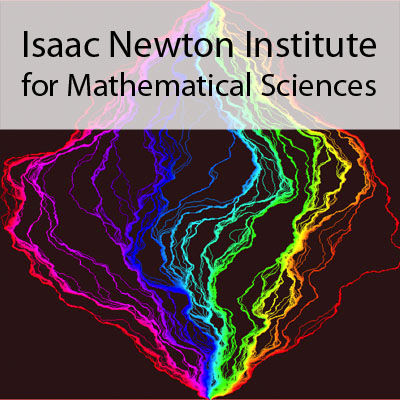A hidden quantum group for pure partition functions of multiple SLEs
1 hour 6 mins,
968.51 MB,
MPEG-4 Video
640x360,
29.97 fps,
44100 Hz,
1.95 Mbits/sec
Share this media item:
Embed this media item:
Embed this media item:
About this item

| Description: |
Kytölä, K (Aalto University)
Tuesday 21 April 2015, 11:30-12:30 |
|---|
| Created: | 2015-04-22 17:21 |
|---|---|
| Collection: | Random Geometry |
| Publisher: | Isaac Newton Institute |
| Copyright: | Kytölä, K |
| Language: | eng (English) |
| Distribution: |
World
|
| Explicit content: | No |
| Aspect Ratio: | 16:9 |
| Screencast: | No |
| Bumper: | UCS Default |
| Trailer: | UCS Default |
| Abstract: | Co-author: Eveliina Peltola (University of Helsinki)
A classification result of Schramm identifies the candidates for scaling limit random curves in critical planar models by their conformal invariance and domain Markov property: in simply connected domains with curves connecting two boundary points the curves are chordal SLEs. The classification of corresponding multiple curves is more involved, due to the presence of nontrivial conformal moduli: instead of a unique law of a curve, there is a finite dimensional convex set of laws consistent with the requirements. The growth process construction of multiple SLE curves relies on partition functions, which must solve a system of partial differential equations. We present a method based on the representation theory of a quantum group, with help of which we explicitly construct a basis of solutions to the partial differential equations corresponding to the extremal points of the convex set. |
|---|---|
Available Formats
| Format | Quality | Bitrate | Size | |||
|---|---|---|---|---|---|---|
| MPEG-4 Video * | 640x360 | 1.95 Mbits/sec | 968.51 MB | View | Download | |
| WebM | 640x360 | 931.9 kbits/sec | 450.48 MB | View | Download | |
| iPod Video | 480x270 | 525.95 kbits/sec | 254.25 MB | View | Download | |
| MP3 | 44100 Hz | 251.86 kbits/sec | 121.75 MB | Listen | Download | |
| Auto | (Allows browser to choose a format it supports) | |||||

